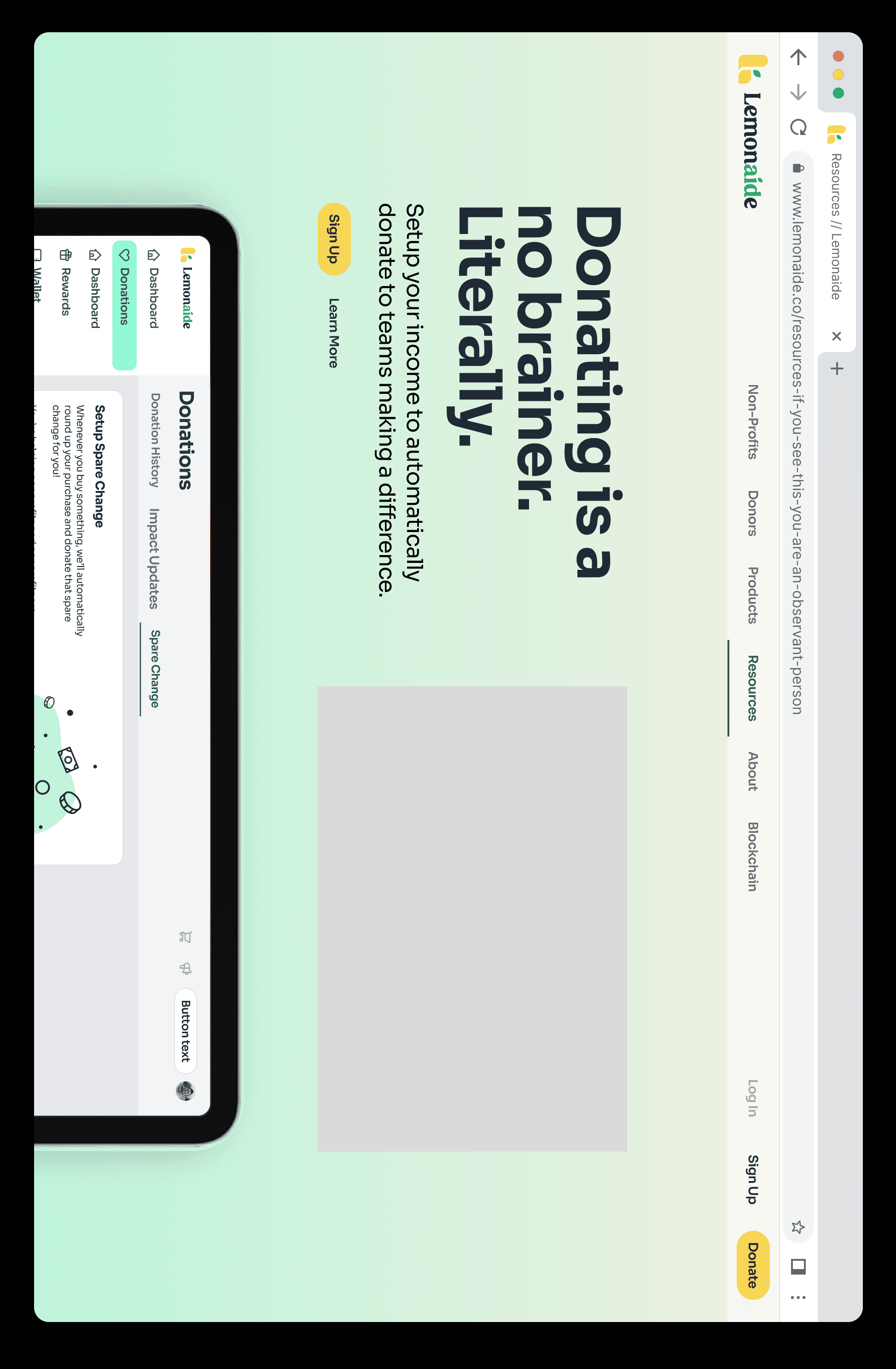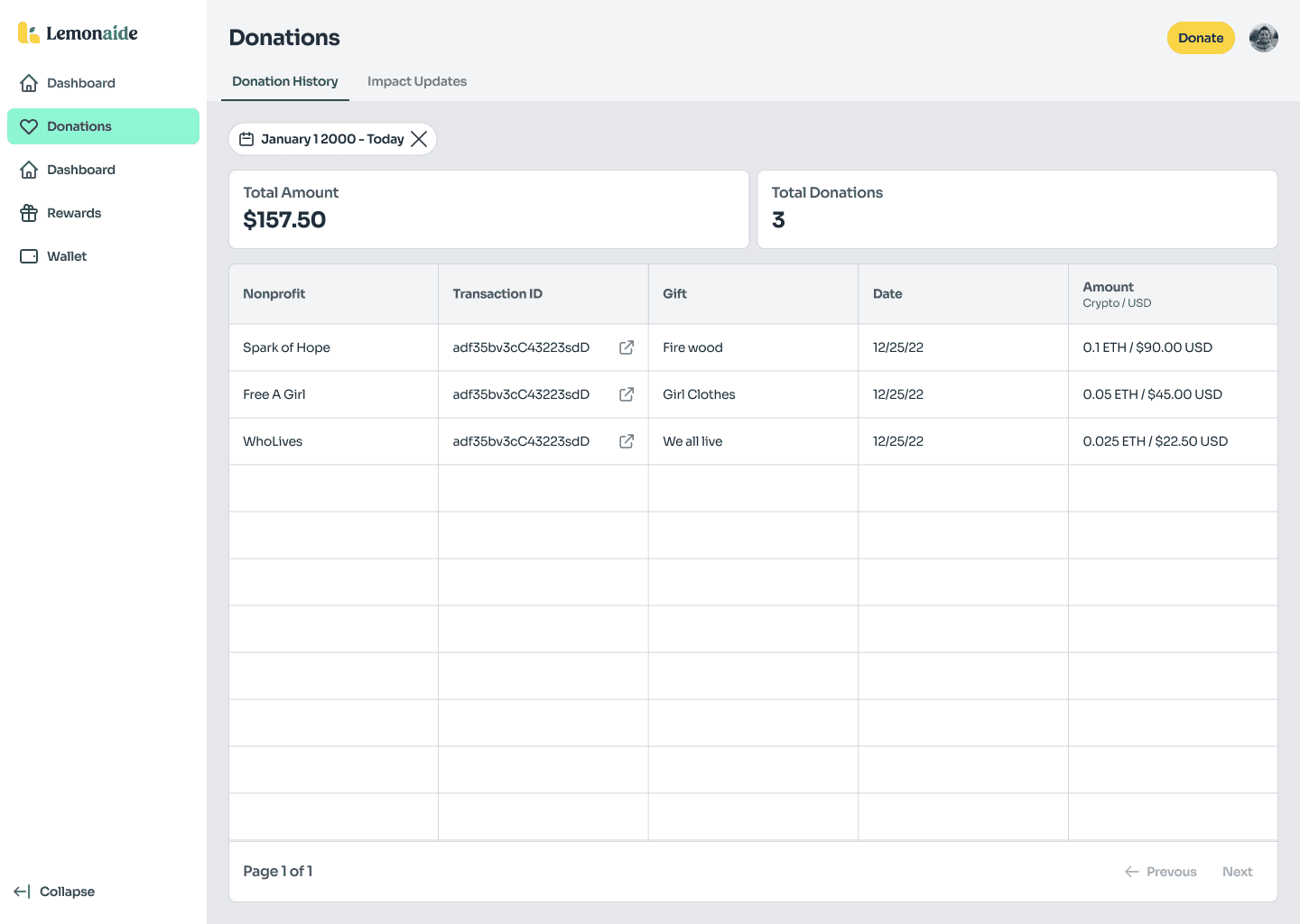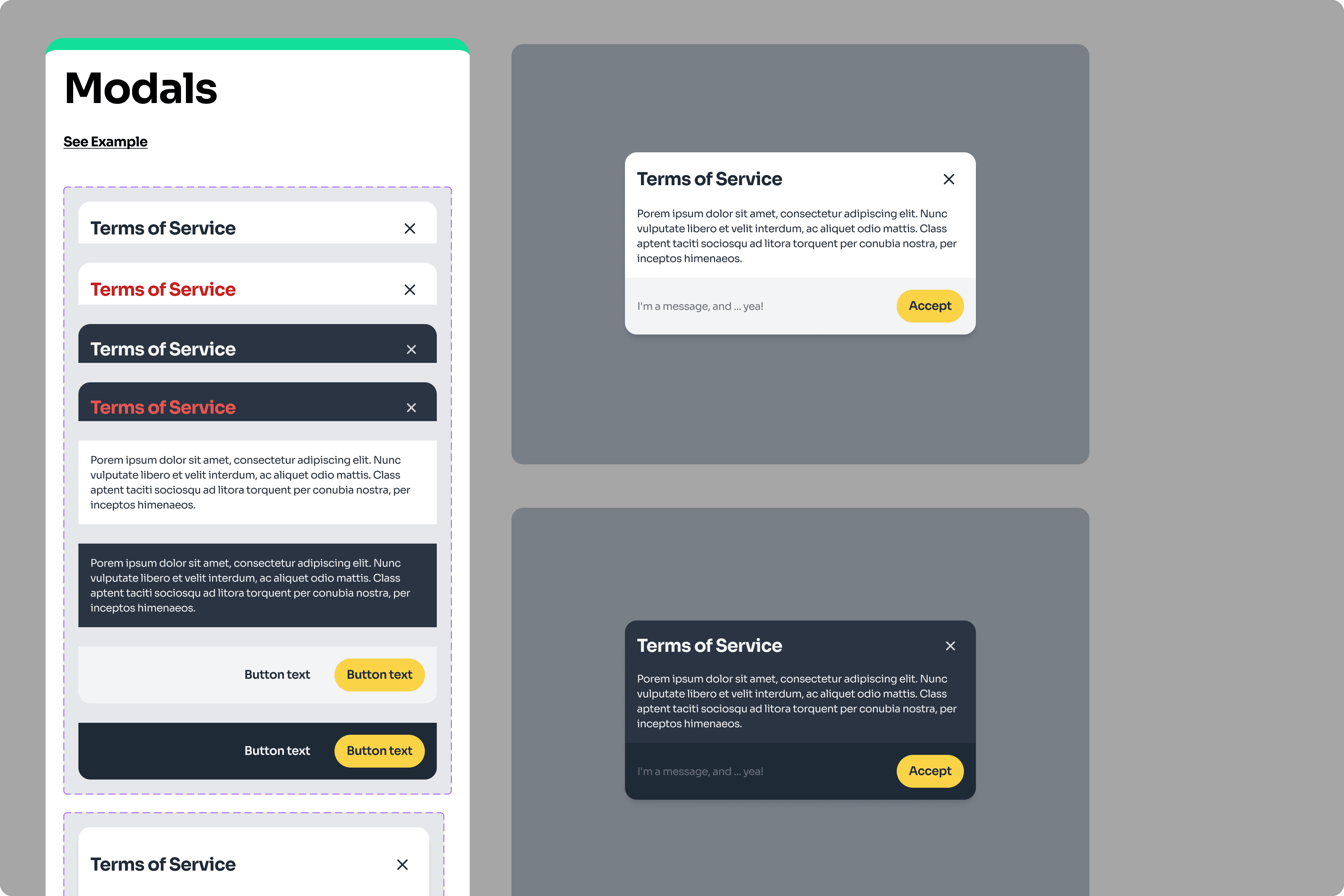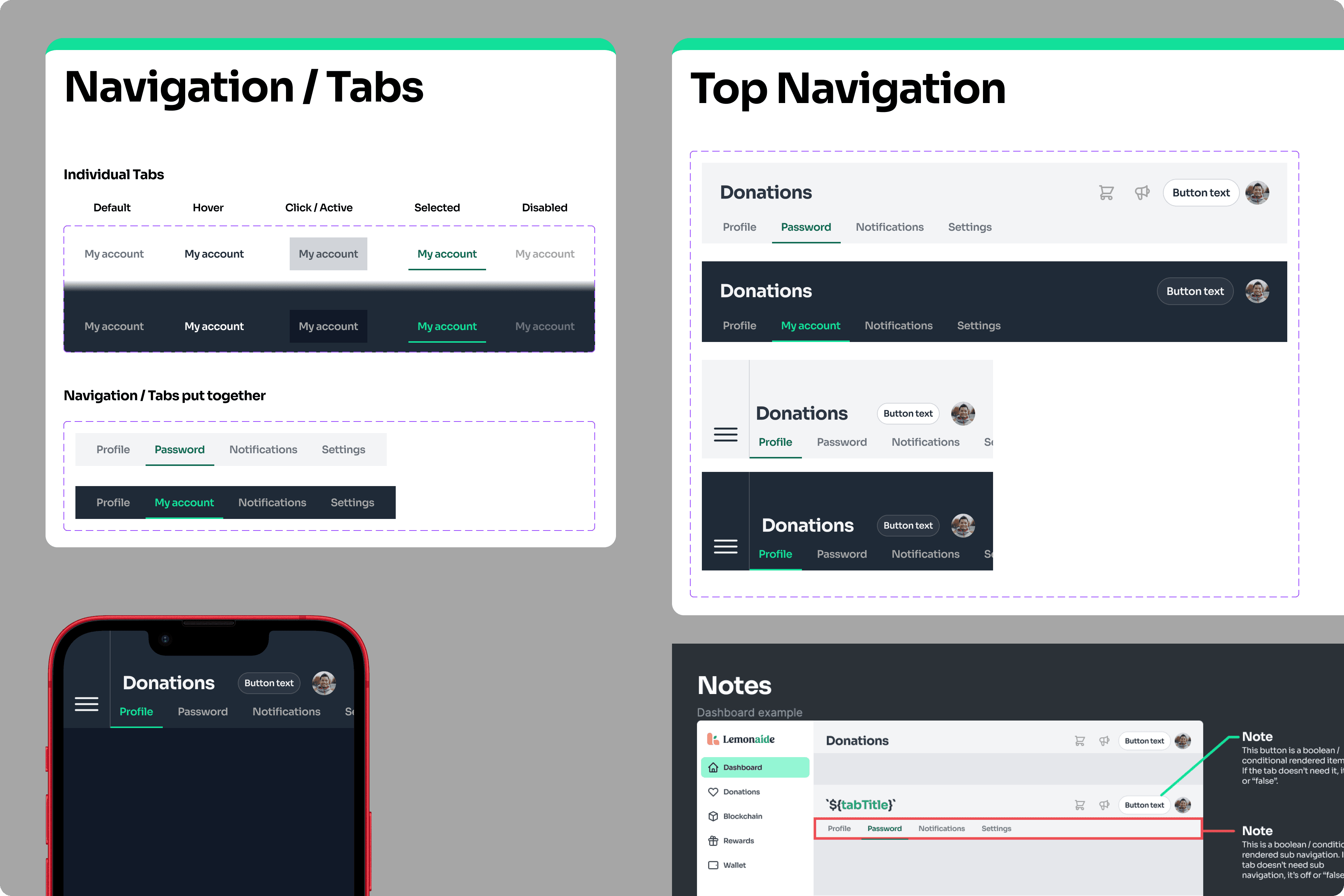Primary Role:
Product Design
Design Systems, Prototyping, Quality Assurance… all the things!
Summary
I was hired with the idea that we'd be helping nonprofits collect more donations to fund philanthropic causes.
After hire, I discovered our product roadmap was fixed—I set out to do product discovery. It was this product discovery and lack of flexibility with leadership that ultimately led me to looking for a new role.
Setting the Stage (Context)
As a new recruit, my goal was to soak up as much information as possible. I didn't understand Web3 / Blockchains, and how we could utilize a blockchain to help nonprofits. I was really eager to interview users and understand what jobs we were helping them do.
Red Flags
It's very difficult to undo or fix a mess that started off wrong.
I learned that we didn't actually have any paying customers, and that my leadership team had been working off assumptions. No one had validated how blockchain technology could provide value to the nonprofit sector.

I took it upon myself to learn
If my leaders weren't going to do the research, I was. I hated the idea of spinning my wheels and not actually helping someone out. Sure I'm not the most philanthropic guy, but who enjoys sitting behind a desk for hours crafting a beautiful Ui that no one will see? Not me.

The tasks I gave myself were:
Generative research: I didn't know what I didn't know, so I needed a general foundation of problems in the nonprofit space.
Market solutions: What are competitors in the space doing? How much are they charging for their services? What are their core features?
Specific problems: Of the research gathered, what specific problems could my team address with our hired skillsets?
Where the action happened
Generative Research: I don't know what I don't know.
First, I began looking for nonprofit watering holes (where nonprofit folks gather online).
I found two Facebook Groups that were really active. I joined them and began reading all the posts and comments. I learned so much!
Learning Summary
I saw right away that a lot of nonprofits struggled with:
Getting donors to fund
Building trust with not-yet-donors so they would convert to donors
Software to help communicate mission, online presence (website) etc.
Market Solutions
From those watering holes I started to collect a list of competitors who were serving our core users. The list grew quite extensive—meaning there were a LOT of jobs to be done in this space!

In the airtable (link above), on the Competitive Features tab, you'll notice that a lot of competitors were supporting specific jobs-to-be-done (JTBD) that we weren't addressing. Namely:
All nonprofits need an online presence of some kind (website)
All nonprofits need a way to collect donations on that site (Donation Widget)
Lemonaide was a solution looking for a problem

According to my quick market research, of the total competitors I had found, only 45% of them even supported Crypto.
This meant that our efforts to push crypto-currency as our differentiator was a bad idea. Bad because that's not nonprofits were asking for. Doing my data mining on the Facebook groups confirmed that too. No one was asking about Crypto. Crypto didn't help them accomplish their goals.
I helped build and design the marketing site. This site was very difficult to design and build because we didn't know what we were building or who we were building for—two huge product mistakes.
Time to pivot! … what do you mean no?
I discoverd too late that Nerd's product "roadmap" wasn't product led.
I setup a meeting with my VP of Engineering. I drew in a big breath. Man was I nervous. Why was I so nervous? I'd done the research. What could he say that would be bad?
I presented the airtable, with the 3 tabs of research initiatives I had started. Then I let him know that I thought our product roadmap didn't reflect what users actually needed to build their nonprofits. So I said: "We should stop wasting time, money, and energy on these features and build a really basic template website builder".
"Sorry, we can't stop building these products. The founders, investors and our CEO want this set of features."
His response actually surprised me. "Sorry, we can't stop building these things. The founders, investors and our CEO want this set of features." I was frustrated. The remainder of that conversation was me asking more questions around that.
I learned that afternoon that Nerd wasn't really interested in being product-led. They were hooked on doing what's fun—building. We were a feature factory.
An Exit (mine)
I don't want to build mediocre product with mediocre coworkers based on mediocre assumptions.
It was at this point where I felt the Nerd ship was way too far off course and my efforts alone wouldn't be able to fix it.
A few weeks later, as I began my job search and dusting off the portfolio—Nerd furloughed most of the company. What a fitting coincidence!
Design System
Aside from my product management, I worked with my developers to build a design system!
I helped brand Lemonaide, create a logo, and build out a design system.














